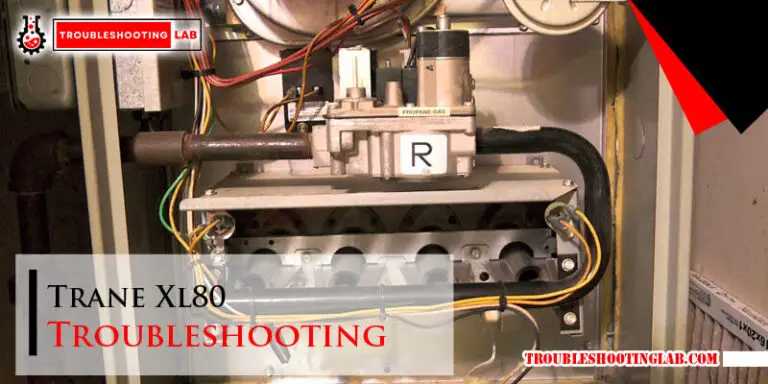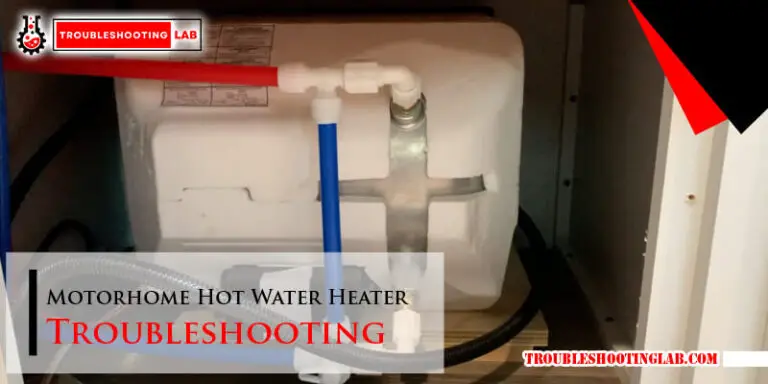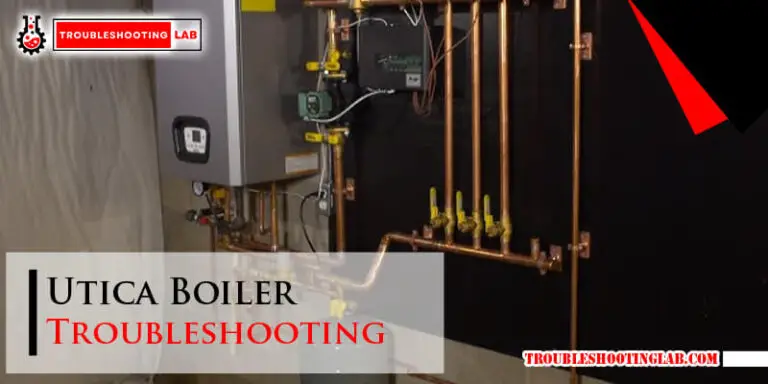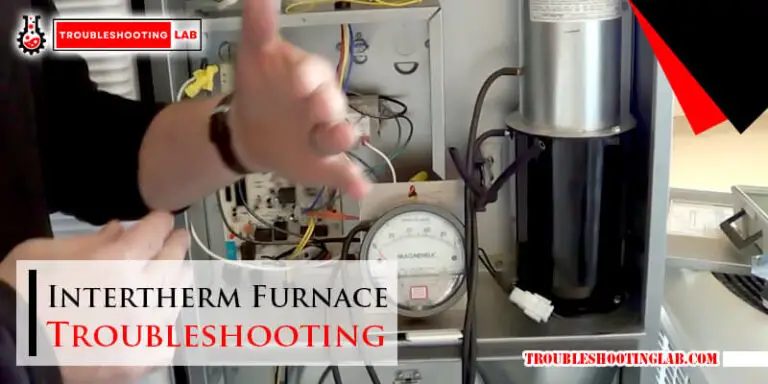Bryant Evolution Thermostat Troubleshooting: Quick Fix Guide
Is your Bryant Evolution thermostat giving you trouble? Don’t worry—you’re not alone.
When your thermostat isn’t working as it should, it can leave you feeling frustrated, especially when your comfort is at stake. But here’s the good news: most issues are easier to fix than you might think. In this guide, we’ll walk you through simple troubleshooting steps to get your thermostat back on track.
Whether it’s not responding, showing an error code, or failing to regulate temperature properly, we’ve got you covered. Stick with us, and by the end, you’ll feel confident tackling the problem head-on. After all, your home deserves to be as comfortable as you want it to be!
Common Issues With Bryant Evolution Thermostat
The Bryant Evolution Thermostat is a feature-packed device designed to keep your home comfortable with ease. But, like any smart device, it can encounter issues that disrupt its performance. Knowing how to troubleshoot common problems can save you time, frustration, and even a potential service call.
Thermostat Not Powering On
A thermostat that won’t turn on can feel like a dead end. Start by checking the basics: Is the thermostat properly connected to power? Verify that the circuit breaker hasn’t tripped and that the thermostat’s wiring is secure.
If everything looks fine, inspect the batteries. Some Bryant Evolution Thermostats use backup batteries, and dead ones can cause it to stop working. Replacing the batteries might be all you need to get it back up and running.
Unresponsive Touchscreen
An unresponsive touchscreen can make you feel stuck. First, clean the screen with a soft, dry cloth to remove dirt or smudges. Even tiny particles can impact the screen’s responsiveness.
If cleaning doesn’t help, try restarting the thermostat. Turn off the power supply for a few minutes, then turn it back on. This simple reset often resolves touchscreen issues.
Incorrect Temperature Readings
Does the displayed temperature feel way off? The thermostat might be in direct sunlight or near a heat source, like a lamp. Relocating it to a more neutral spot can solve this problem.
Another culprit could be dust or debris inside the device. Open the thermostat carefully and gently clean it to ensure accurate temperature readings.
Hvac System Not Responding
Nothing feels worse than your HVAC system ignoring your thermostat commands. Start by checking if the thermostat is set to the correct mode, like “Cool” or “Heat.” Sometimes, a simple setting adjustment can fix the issue.
If the system still doesn’t respond, inspect the wiring connections between the thermostat and the HVAC unit. Loose or damaged wires might be the reason. Tighten any loose connections, but if you’re unsure about handling wires, it’s best to call a professional.
Dealing with these common issues doesn’t have to be overwhelming. With a little patience and the right steps, you can often fix the problem on your own. Is there a specific thermostat issue you’ve faced? Share your experiences in the comments below—your insight might help someone else troubleshoot their own device!

Credit: www.youtube.com
Basic Checks Before Troubleshooting
Having trouble with your Bryant Evolution thermostat? Before jumping into complex troubleshooting steps, it’s smart to start with some basic checks. Often, minor issues like power glitches or connectivity problems can cause major headaches. By addressing these simple areas first, you might save yourself time and stress.
Inspecting Power Supply
Is your thermostat screen completely blank? This could mean it’s not receiving power. Check if the thermostat is securely mounted on the wall and connected properly. If it’s battery-powered, replace the batteries with fresh ones and see if the display lights up. A simple battery change can sometimes fix the issue.
Checking Circuit Breakers
Sometimes, a tripped circuit breaker can disrupt power to your thermostat. Head to your home’s electrical panel and check for any switches that aren’t in the “on” position. Flip them back and check if your thermostat comes back to life. If this keeps happening, it might be worth investigating whether there’s an underlying electrical issue.
Verifying Wi-fi Connectivity
Many Bryant Evolution thermostats rely on Wi-Fi for remote access and functionality. Is your Wi-Fi signal strong enough? Test your internet connection with another device like your phone or laptop. If your Wi-Fi is working fine but the thermostat still won’t connect, try reconnecting it to the network manually. Weak signals or incorrect passwords are common culprits here.
Resetting The Thermostat
A reset can often solve glitches that seem hard to explain. Locate the reset button on your thermostat—typically found in the menu or on the device itself. Press it and follow any instructions on the screen. This process essentially gives your thermostat a fresh start, clearing minor software hiccups. Just remember, resetting may erase saved settings, so you’ll need to reprogram them afterward.
Taking the time to check these basics might be all it takes to get your thermostat back up and running. What’s your go-to fix for tech issues? Let us know in the comments below!
Fixing Power-related Problems
Power-related issues are one of the most common problems you might face with your Bryant Evolution thermostat. If your thermostat won’t turn on, keeps restarting, or doesn’t seem to function properly, it’s likely due to a power disruption. Let’s tackle some practical steps to fix these issues and get your thermostat back on track.
Replacing Batteries
Sometimes, the solution is as simple as swapping out the batteries. If your thermostat uses batteries, low power can cause it to malfunction or shut down completely. Remove the thermostat from its wall mount and check the battery compartment.
Replace the old batteries with fresh ones, ensuring they’re installed in the correct direction. Use high-quality alkaline batteries for longer life. If the thermostat powers up after this, you’ve solved the issue!
Inspecting Wiring Connections
Loose or damaged wires can disrupt your thermostat’s power supply. Carefully detach the thermostat from its base and examine the wiring. Look for frayed wires, loose screws, or disconnected cables.
If you spot any issues, secure the wires tightly into their designated ports. Double-check that each wire matches the labeled terminal. A small screwdriver can be handy here, but don’t overtighten as it could damage the connections.
Testing The C-wire Connection
Modern thermostats like the Bryant Evolution often rely on a C-wire (common wire) for constant power. If your thermostat is hardwired but still not working, the C-wire might be at fault. Locate the C-wire in your thermostat’s wiring setup—it’s usually blue or black.
Use a multimeter to test whether the C-wire is delivering the required voltage (typically 24V). If the wire isn’t supplying power, check the connection at the HVAC system. If necessary, consult a professional to assess and repair your system’s wiring.
Addressing these power-related issues can often restore your thermostat’s functionality without much hassle. What step are you trying first? Let us know how it works out!
Resolving Connectivity Issues
Struggling with your Bryant Evolution thermostat’s connectivity? It’s frustrating when a smart thermostat loses its connection, leaving you without control over your home’s comfort. Fortunately, resolving connectivity issues is often simpler than it seems. Let’s dive into three specific solutions to get your thermostat back online in no time.
Reconnecting To Wi-fi Network
One common cause of connectivity issues is your thermostat losing its Wi-Fi connection. Start by ensuring your Wi-Fi is working properly on other devices like your smartphone or laptop. If it’s not, reboot your router.
Next, check the thermostat’s Wi-Fi settings. Go to the menu, select Wi-Fi, and verify that the correct network is selected. If needed, re-enter your Wi-Fi password. Make sure the signal strength is sufficient; weak signals can cause frequent disconnections.
Still having trouble? Move your router closer to the thermostat or consider using a Wi-Fi extender. A stronger signal often resolves these issues.
Updating Firmware
Outdated firmware can lead to bugs, including connectivity problems. Check if your Bryant Evolution thermostat has the latest software installed. To do this, navigate to the settings menu and look for a “Check for Updates” option.
If an update is available, follow the on-screen instructions to install it. This may take a few minutes, so be patient. Keeping your firmware updated not only fixes connectivity glitches but also improves overall performance.
Don’t overlook this step. Skipping updates may leave you with recurring problems down the line.
Handling Router Interference
Have you considered that your router might be the problem? Routers can sometimes face interference from other electronic devices like microwaves, baby monitors, or cordless phones. If your thermostat is near any of these, move it to a quieter spot.
Also, ensure your router is operating on a less crowded channel. Many routers default to the 2.4 GHz band, which can get congested. Switching to the 5 GHz band might give your thermostat a clearer signal.
Lastly, check your router’s firewall settings. Overly strict security settings can block your thermostat from connecting. Temporarily disable the firewall to see if that resolves the issue, then adjust the settings accordingly.
Tackling connectivity issues may feel overwhelming, but taking it step by step makes it manageable. Which of these solutions helped you the most? Share your experience below!
Calibrating Temperature Settings
The Bryant Evolution Thermostat is designed for precision and comfort. Over time, temperature settings may need calibration to ensure accurate readings. Calibrating these settings enhances energy efficiency and maintains consistent indoor comfort. This guide explains key steps to fine-tune temperature readings effectively.
Adjusting Temperature Offset
Temperature offset adjusts the thermostat’s reading to match the actual room temperature. Start by accessing the thermostat settings menu. Locate the temperature offset option and select it. Compare the thermostat reading with an accurate thermometer placed nearby. Adjust the offset value until both readings align closely. Save the changes to ensure future accuracy.
Ensuring Proper Placement
Placement affects the thermostat’s ability to measure temperature accurately. Install the thermostat on an interior wall, away from direct sunlight. Avoid placing it near windows, doors, or air vents. These areas can cause temperature fluctuations. Keep it at eye level for easy access and consistent readings.
Cleaning The Thermostat Sensor
Dirt and debris on the sensor can interfere with temperature detection. Turn off the thermostat before cleaning to prevent damage. Use a soft brush or cloth to gently remove dust from the sensor. Avoid using harsh chemicals or water. Regular cleaning ensures the sensor remains responsive and accurate.
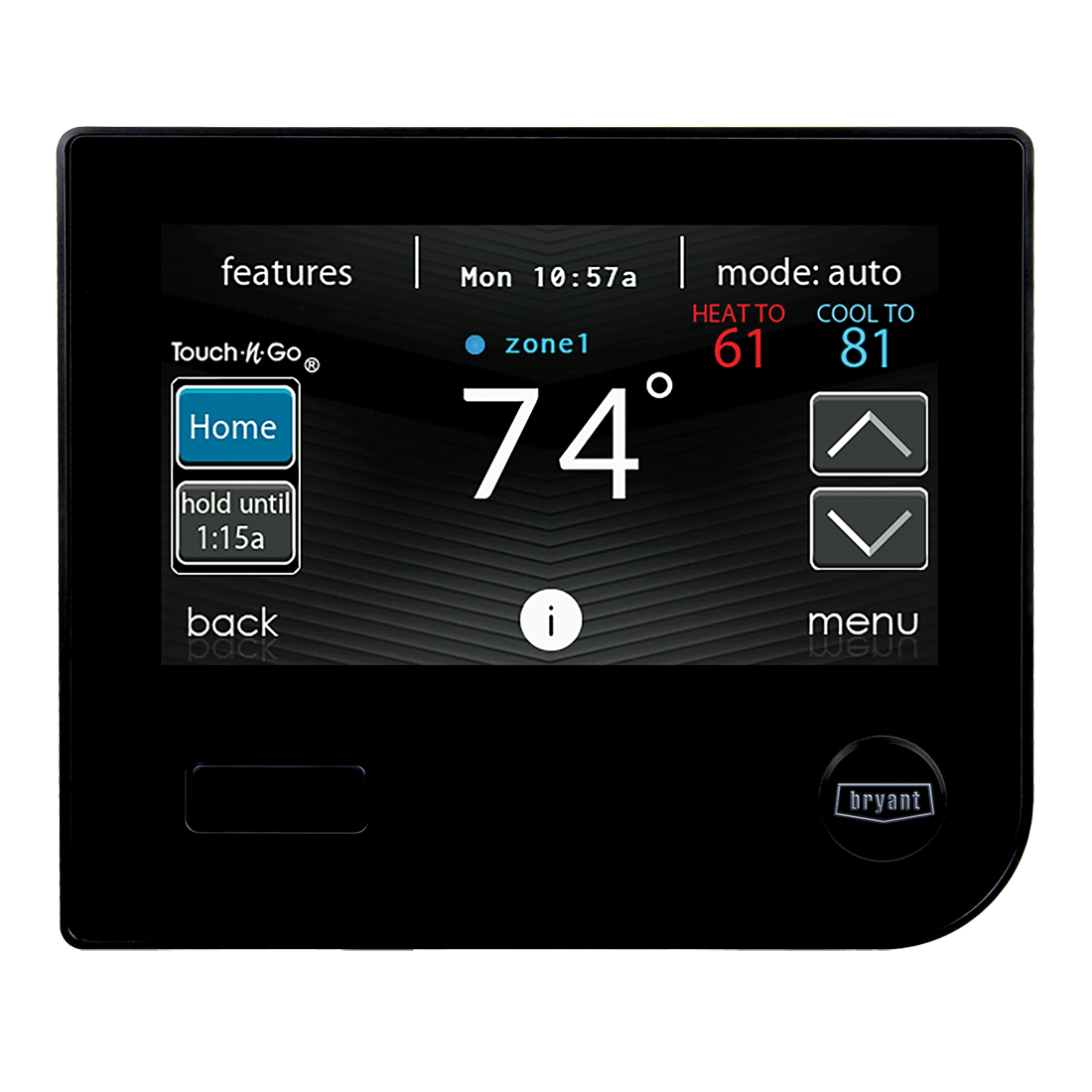
Credit: www.bryant.com
Hvac System Compatibility Problems
The Bryant Evolution thermostat is a smart device for efficient climate control. Sometimes, users face HVAC system compatibility problems with this thermostat. These issues can disrupt your comfort and thermostat performance. Understanding and resolving compatibility problems is essential for smooth operation.
Checking System Compatibility
Not all HVAC systems work with the Bryant Evolution thermostat. Verify your system type before installing the thermostat. Check if your system supports communicating technology or traditional wiring. Look for details in your HVAC system’s manual or specifications. Confirming compatibility avoids issues and ensures optimal functionality.
Reconfiguring Thermostat Settings
Incorrect settings can lead to compatibility problems. Access the thermostat menu to adjust the system type. Ensure the thermostat matches the configuration of your HVAC system. Resetting or updating settings can often fix compatibility errors. Follow the step-by-step process outlined in your thermostat guide.
Consulting The User Manual
The user manual is a valuable resource for resolving compatibility issues. It provides specific instructions for your Bryant Evolution thermostat model. Locate the section about HVAC system compatibility. Follow the troubleshooting tips to address and fix any misconfiguration. Use it as a reference for setup and adjustments.
When To Contact Professional Support
The Bryant Evolution thermostat is a reliable device for controlling your home’s comfort. Yet, there are times when troubleshooting issues alone isn’t effective. Knowing when to contact professional support can save time and prevent further problems. This section will guide you on identifying signs that require expert assistance.
Identifying Persistent Issues
Some thermostat problems can be solved with basic troubleshooting steps. Persistent issues, like consistent error codes or unresponsive controls, need professional expertise. If the thermostat fails to maintain the desired temperature, it might signal deeper technical issues. Strange noises or frequent system shutdowns are also warning signs. These situations often require a technician to inspect the system thoroughly.
Warranty And Service Options
Check your thermostat’s warranty before seeking professional help. Many Bryant Evolution thermostats come with warranty coverage for specific repairs. Using the warranty can reduce repair costs significantly. Service plans offered by Bryant dealers may include maintenance and support. Review your warranty terms to know what repairs are covered and who to contact.
Finding Certified Technicians
Certified technicians ensure repairs meet the manufacturer’s standards. Bryant-certified professionals are trained to handle Evolution thermostats accurately. Search for technicians who are licensed and experienced with Bryant systems. Use online directories or contact Bryant customer service to find nearby certified experts. Hiring qualified professionals ensures the thermostat works efficiently after repairs.

Credit: www.youtube.com
Preventive Maintenance Tips
The Bryant Evolution thermostat is a smart solution for maintaining indoor comfort. Like any device, regular care can prevent issues and keep it running smoothly. Preventive maintenance ensures the thermostat operates efficiently and lasts longer. Below are some tips to help maintain your thermostat effectively.
Regular Cleaning
Dust and dirt can collect on the thermostat over time. Clean the screen and outer surface gently with a soft cloth. Avoid using harsh chemicals that might damage the device. Check the vents and areas around the thermostat for dust buildup. This ensures sensors read temperatures accurately.
Updating Software
Outdated software can affect the thermostat’s performance. Check for updates regularly through the manufacturer’s website or app. Updating software improves system compatibility and resolves bugs. Ensure your Wi-Fi connection is stable before starting the update process.
Monitoring System Performance
Keep an eye on how the thermostat interacts with your HVAC system. Watch for unusual temperature fluctuations or delayed responses. Review energy usage patterns using the thermostat’s smart features. Monitoring helps detect issues early before they become major problems.
Conclusion
Troubleshooting your Bryant Evolution Thermostat doesn’t have to feel overwhelming. Start by checking basic settings and power connections. Common issues often have simple fixes, like adjusting the temperature or replacing batteries. For more complex problems, consult the manual or contact a professional.
Regular maintenance can prevent many issues before they start. With patience and a systematic approach, you can get your thermostat working smoothly again. Always prioritize safety when handling electrical devices. A well-functioning thermostat keeps your home comfortable and energy-efficient. Take small steps, and you’ll see big improvements in no time.

